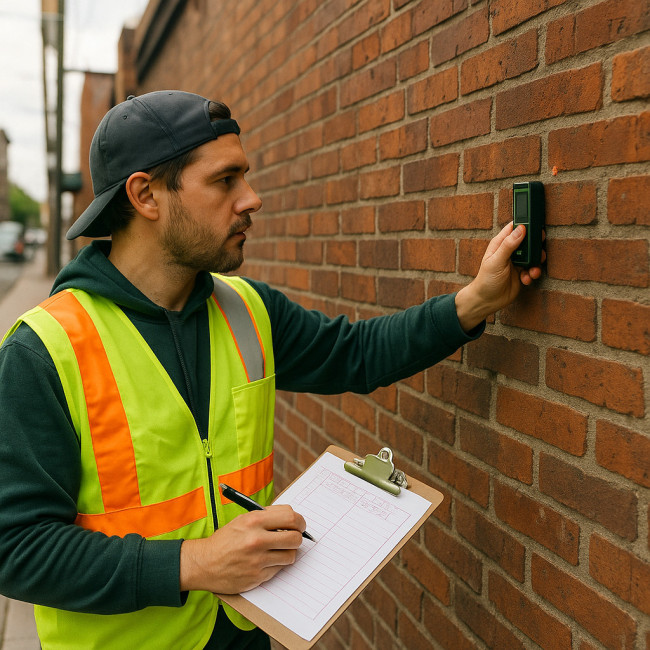Street artist commissions: drafting clear briefs and mural contracts
Commissioning a street artist is thrilling, yet one vague sentence in the brief or one missing clause in the contract can cost days of work, extra lift hire and even legal headaches. Follow this step-by-step guide to write crystal-clear briefs, negotiate balanced mural contracts and secure a vibrant result everyone loves.
Why clarity upfront saves paint, time and money
A wall is a public canvas: once the first colour hits the brick, revisions become expensive. A tight brief and a signed contract align the commissioner, the artist and third-party stakeholders before the first spray can clicks. Clear expectations mean:
- Accurate budgeting and fewer surprise costs.
- Faster permit approvals—municipal officers love precise specs.
- Less back-and-forth on creative direction.
- Reduced risk if weather, scaffolding or community challenges arise.
Key elements of a bullet-proof street art brief

Wall specifications and environment
List every physical detail. Include measurements (height, width and any recesses), surface type (brick, stucco, metal) and existing coatings. Add photos taken in daylight and at night to reveal texture and shadows. A precise brief avoids quoting errors and informs safety gear choices. For cost projections, pair your measurements with the free calculator in our urban mural budget builder.
Creative scope and brand alignment
Describe the desired mood, colour palette and any mandatory brand elements. Instead of “city pride,” try “celebrate local jazz heritage with vibrant saxophone motifs and a vintage record colour scheme (#95854c gold accents).” Attach mood boards, reference images and must-use or must-avoid symbols.
Community, safety and permits
Outdoor art lives in a social space. Note nearby schools, heritage sites and traffic flow to plan safe lift positions. If the wall faces a protected street, you likely need municipal approval. Share your draft with the artist and read our guide on speedy public-art permits to avoid last-minute rejections.
Materials, sustainability and weather
Request products that meet your CSR goals. Low-VOC aerosols and recycled caps now match pro finish quality, as shown in this sustainable spray paint overview. State if anti-graffiti varnish is mandatory and specify temperature or humidity limitations for application.
Deliverables and formats
- Concept sketch (PDF, 300 dpi).
- Colour mock-up on wall photo (JPEG + layered PSD).
- Progress shots for social media (optional but great for hype).
- Final high-resolution photo set, minimum 24 MP.
Cost structure: from sketch to sealant
| Phase | Typical cost share | Billing trigger |
|---|---|---|
| Concept & revisions | 20 % | Contract signature |
| Wall prep & priming | 15 % | Site hand-over |
| Artwork execution | 45 % | Mid-way sign-off |
| Protective coating | 10 % | Before varnish |
| Final files & launch content | 10 % | Delivery of assets |
Percentages vary by wall size, lift costs and material choice. Tie each instalment to a milestone, not a calendar date, to keep incentives aligned.
Drafting a fair mural contract

Essential clauses
- Scope of work – reference the brief's deliverables and prohibit unplanned add-ons without a signed change order.
- Timeline & weather buffer – include an extension clause for rain or extreme heat.
- Payment schedule – mirror the table above. Add late-payment fees and specify digital invoicing.
- Usage rights – detail how you may reproduce the mural (print, social, merchandise) and whether extra royalties apply.
- Removal or alteration – state notice period (usually 30 days) before the wall owner can paint over the piece.
- Liability & insurance – clarify who covers scaffolding, public liability and damage caused by third parties.
- Maintenance – define touch-up fees or hourly rates for future fade or vandalism repairs.
Caution: “All rights reserved by commissioner” can violate moral rights in many countries. Keep the artist's right to be credited intact.
Usage rights: beyond the wall
If you plan to monetise the design on event posters or apparel, negotiate licensing fees up front. Many brands lock favourable terms by offering revenue share instead of a one-off buy-out. For multi-channel image campaigns, creative directors often browse illustration and design collaboration boards to match mural graphics with packaging roll-outs.
Collaboration workflows that keep projects on track
Transparent workflows reduce mid-mural friction. Popular steps:
- Kick-off call – align on brief, budget and visual references.
- Sketch review – approve or request tweaks within 48 hours.
- Colour mock-up – overlay art on wall photo for final green light.
- On-site daily check-ins – 5-minute video or photo updates.
- Final walk-through – inspect work before sealing varnish.
- Launch assets – gather photos and a 15-second reel; see filming tips in this reel setup guide.
Common pitfalls and how to avoid them
- Vague colour calls – replace “warm red” with Pantone codes.
- Missing lift permits – book gear early, especially during festival seasons.
- Over-revisions – cap free revisions to two rounds; clarify extra fees.
- No weather clause – storms ruin timelines and fresh paint; build a buffer.
- Ignored post-mural lighting – test night visibility before final sign-off.
FAQ
- How detailed should the sketch phase be before signing?
- Provide at least a colour rough and wall mock-up. The artist should supply a written concept description so the legal contract can reference an exact design.
- Who buys paint and protective varnish?
- Either party can, but list the responsible buyer in the contract. Brands often supply paint to ensure corporate colours match.
- Can I trademark the mural design?
- Only if the artist grants explicit transfer of intellectual property and no prior artwork conflicts. Always run a trademark check.
- What happens if the city council rejects the mural after signing?
- Add a termination clause that covers partial payment for completed design work and reimburses application fees.
- How long does a protective coating last?
- Quality UV-resistant varnish lasts 5–10 years. Factor annual inspections into maintenance clauses.
Quiz: Are you ready to brief your street artist?
Next steps
Download your editable brief template, tweak the clauses above and line up a short list of artists. When your contract aligns incentives and responsibilities, you free creatives to paint their best work—while you protect timelines, budgets and brand reputation.
Ready to commission? Share your wall specs with potential artists today and turn a blank façade into a landmark.











